KEY POINTS
- 26 Hindus killed by Pakistan-backed terrorists in Pahalgam
- Global media avoided calling it terrorism
- Term “Indian-administered Kashmir” used to question India’s control
On April 22, the scenic town of Pahalgam in Jammu and Kashmir was shaken by one of the deadliest terrorist attacks in recent memory. At least 26 innocent civilians were brutally killed. Out of these, 24 victims were Hindus, gunned down simply because of their religious identity. The attackers, identified as members of the Resistance Front (TRF), a terrorist group backed by the Pakistan-based Lashkar-e-Taiba (LeT), opened fire on unarmed tourists. Survivors have confirmed that the terrorists specifically targeted non-Muslim tourists. This horrific act has left the entire nation in grief and rage.
Despite the clear evidence and eyewitness accounts, many international media outlets chose to ignore the real nature of the attack. These news agencies avoided calling the killers “terrorists.” Instead, they used soft terms like “gunmen” or “militants.” Worse, many reports did not even mention that the victims were Hindus, or that the terrorists were from Pakistan-based Islamic groups. This has created serious questions about how the global media chooses its words when reporting on terrorism in India.
In its article, the BBC used the headline: “More than 20 killed after gunmen open fire on tourists in Indian-administered Kashmir.” The word “terrorist” was not used by the BBC itself—only quoted from unnamed sources. There was no mention of Pakistan’s role or the ideology behind the killing. This style of reporting, which avoids naming the truth, looks more like denial than journalism.
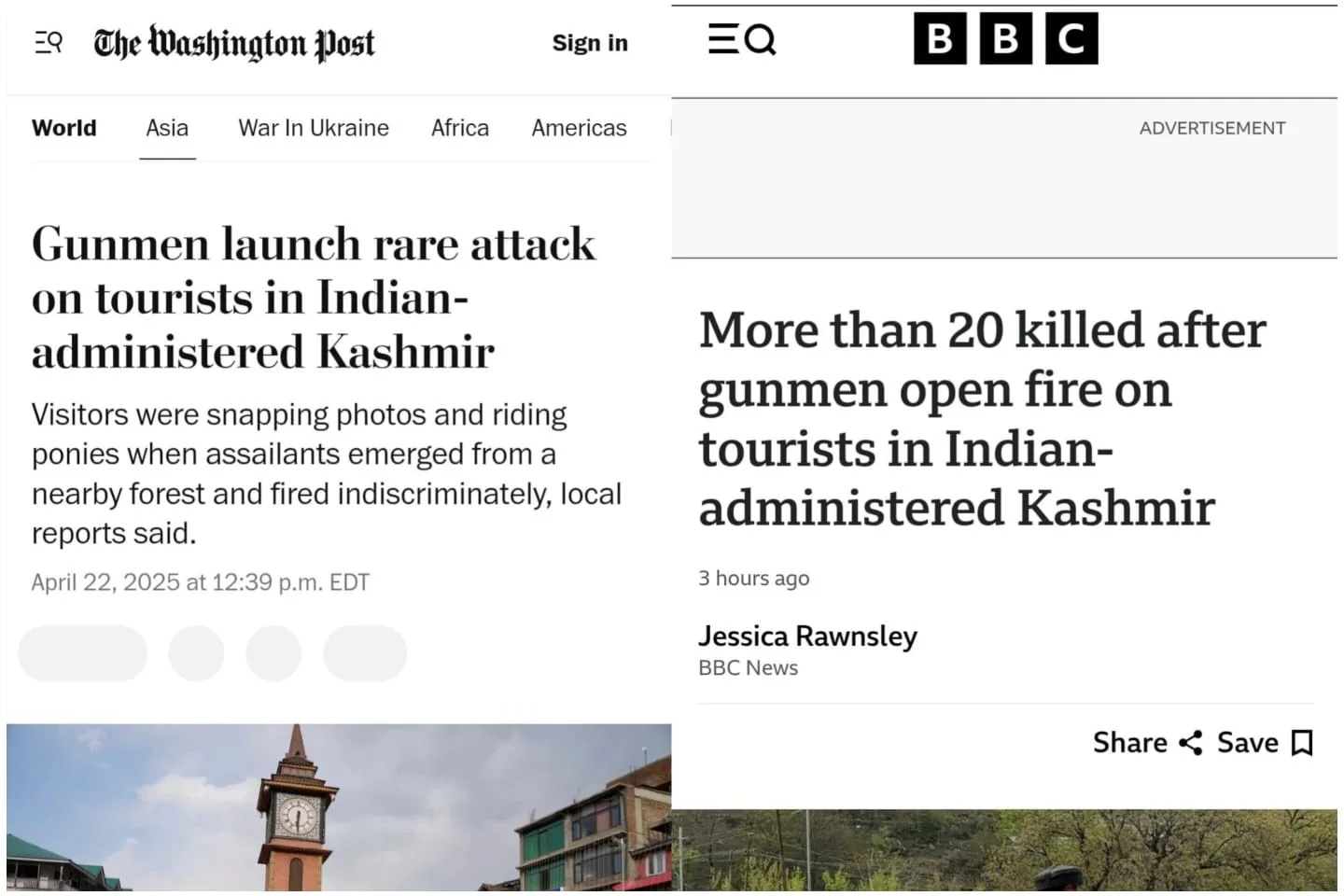
Al Jazeera went further by calling the attackers “gunmen” and linking the incident to general unrest in the region. The report did not acknowledge that this was a religiously motivated act of terror. Instead, it framed the attack as a part of a political conflict, describing the terrorists as “armed groups fighting against Indian rule.” This dangerous language gives the impression that this mass killing was part of a resistance movement rather than a hate crime against Hindus.
News agencies like The Washington Post, France 24, DW (Deutsche Welle), and SBS News all followed a similar approach. They used neutral words like “gunmen,” avoided any mention of Islamic extremism, and repeatedly used the term “Indian-administered Kashmir.” This term itself is controversial because it questions India’s sovereignty over Jammu and Kashmir. These editorial decisions appear less like unbiased journalism and more like subtle support for separatist narratives.
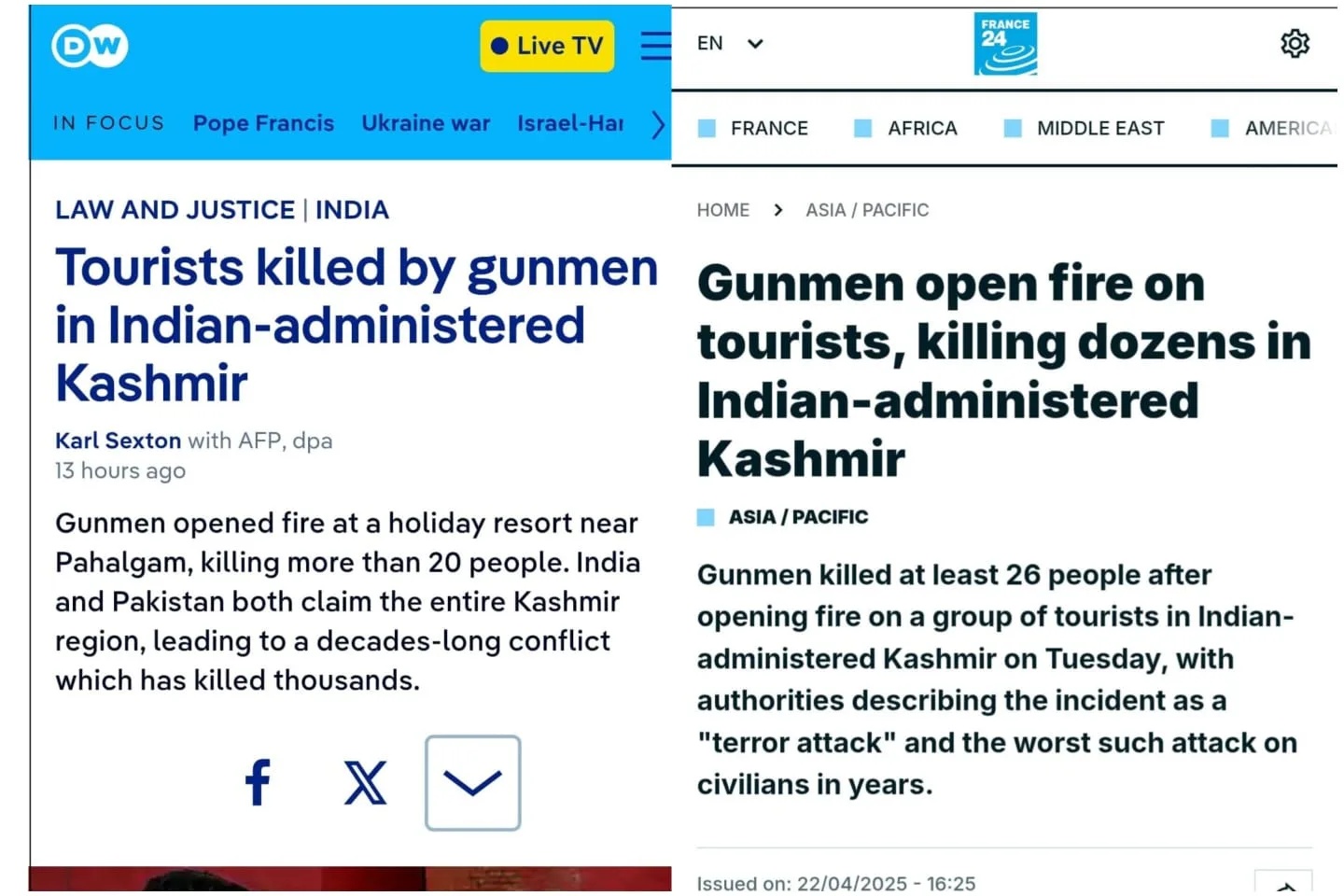
Middle East Eye attempted to turn the spotlight away from the victims. It focused on India’s security policies in Kashmir and quoted NGOs that have often criticized India. The Bangladesh Guardian chose to call the killers “armed assailants” and did not even hint at the religious identity of the victims or the attackers’ ideology. This kind of reporting fails the basic ethics of journalism—telling the truth.
One of the few outlets that acknowledged the truth was the Asia News Network. It used the term “terror attack” and named the TRF as a terrorist outfit. However, even this report used “Indian-administered Kashmir,” showing how deep this pattern runs across the global media landscape.
The way the global media reported the Pahalgam attack shows a clear pattern. Most outlets avoided calling it terrorism. They did not mention that Hindus were targeted. They used politically charged phrases like “Indian-administered Kashmir,” which weakens India’s position internationally. These choices are not just about language, they influence how the world sees such attacks.
While media outlets hesitated, leaders around the world were clear in their condemnation. Israeli PM Benjamin Netanyahu, French President Emmanuel Macron, Russian President Vladimir Putin, and even leaders from countries like Saudi Arabia, UAE, Iran, and China all called the attack what it was—terrorism. They offered strong support to India and stood in solidarity with the victims.
When media organizations refuse to name the truth, it affects not just public opinion but international policy and justice. If the ideological motive is hidden and the victims’ identity blurred, it becomes easier for terrorist groups to escape accountability. Worse, it encourages future attacks by making the global response weaker and confused.
The Pahalgam massacre was not just another violent incident. It was a religiously targeted, ideologically motivated act of terrorism. India is not only battling terrorists across the border but is also fighting a media narrative that often blurs the line between truth and agenda. Journalism should be about facts, not politics. When lives are lost, hiding the truth is not neutrality, it is complicity.
The world must ask: Why did the global media fail to report honestly on this attack? Why was the religious identity of the victims erased? And why does the media use words that question India’s sovereignty?

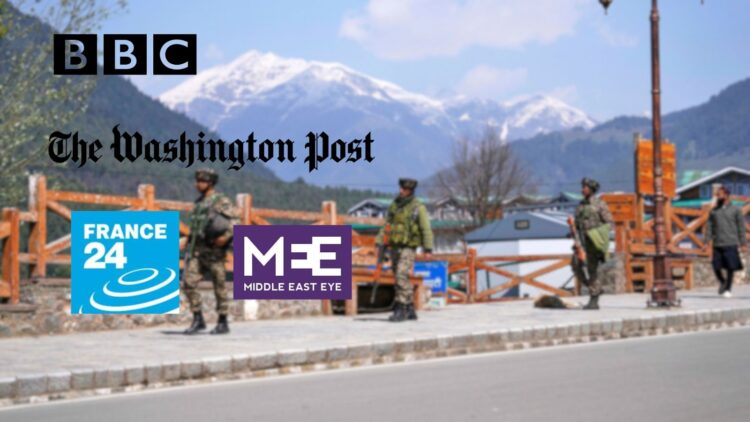
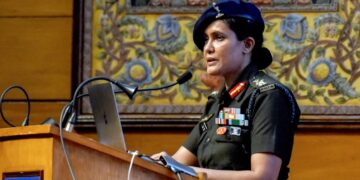

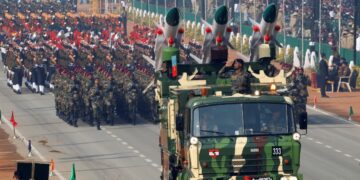
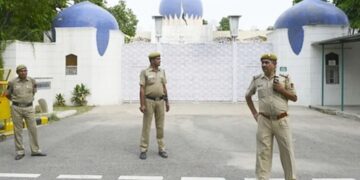











Comments